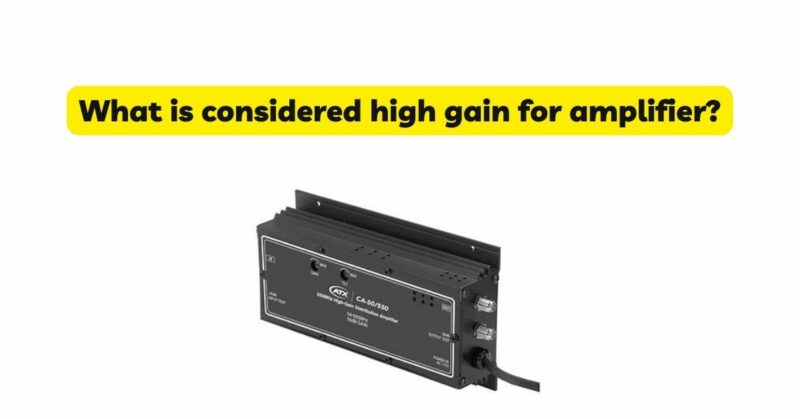When it comes to audio amplifiers, the term “gain” refers to the amplification factor that boosts the strength of an audio signal. Amplifiers with higher gain settings provide greater amplification, resulting in increased volume levels and improved signal-to-noise ratios. However, the definition of what is considered “high gain” can vary depending on various factors, including the specific application, audio system requirements, and individual preferences. In this article, we will delve into the concept of high gain in amplifiers, exploring the thresholds and considerations associated with this term.
Defining High Gain: High gain in amplifiers is a relative term that is used to describe amplifiers with significant amplification capabilities. It refers to amplifiers that can achieve substantial volume levels and effectively boost the strength of the audio signal. The perception of what is considered high gain can vary among different audio enthusiasts, musicians, and professionals, depending on their specific needs and expectations.
Factors Influencing High Gain Perception:
- Application and Use: The perception of high gain can vary based on the intended application of the amplifier. For example, a guitar amplifier designed for heavy metal music may be considered high gain if it provides significant amplification to produce distortion and saturated tones. On the other hand, a high-fidelity stereo amplifier used for critical listening in a home audio setup might have a lower threshold for what is considered high gain.
- Sensitivity of Speakers: The sensitivity of the speakers used in conjunction with the amplifier plays a significant role in determining what is considered high gain. Speakers with higher sensitivity ratings require less amplification to achieve a given volume level compared to speakers with lower sensitivity ratings. Consequently, an amplifier driving high-sensitivity speakers may not need as much gain to deliver the desired volume and sound quality, potentially lowering the perception of what is considered high gain.
- Noise Floor and Signal-to-Noise Ratio: Amplifiers with higher gain settings can amplify not only the desired audio signal but also any background noise or interference present in the system. This can result in a higher noise floor, which can negatively impact the audio quality. Achieving a balance between amplification and signal-to-noise ratio is crucial. Thus, what is considered high gain may also depend on the desired signal purity and the acceptable level of background noise.
- Personal Preferences and Musical Genres: Personal preferences and the type of music being played can influence the perception of high gain. Different musical genres, such as heavy metal, hard rock, or certain electronic music genres, often require a higher level of gain to achieve the desired tonal characteristics and distortion effects. In contrast, genres like classical or jazz may demand lower gain settings to maintain clarity and dynamics.
Conclusion: The perception of what is considered high gain in amplifiers can vary depending on multiple factors, including the application, speaker sensitivity, noise floor considerations, and personal preferences. What may be considered high gain in one context may not necessarily hold true in another. It’s important to assess the specific requirements of your audio setup, consider the intended application, and find a balance between amplification and sound quality. Ultimately, the definition of high gain is subjective and should be determined based on individual needs, sonic preferences, and the desired audio experience.


